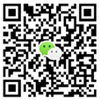杭州市濱江區(qū)偉業(yè)路3號
業(yè)務(wù)熱線(微信同號):18143453325
業(yè)務(wù)郵箱:[email protected]
業(yè)務(wù)QQ:2848414880
目標:致力于幫助中國企業(yè)出海淘金
使命:為國內(nèi)企業(yè)跨境出海提供動力支持
愿景:打造用戶期待和尊重的外貿(mào)服務(wù)商
Copy © 外貿(mào)巴巴 176study.cn 版權(quán)所有備案號:浙ICP備18013128號-2
 浙公網(wǎng)安備 33010802012068號
浙公網(wǎng)安備 33010802012068號






